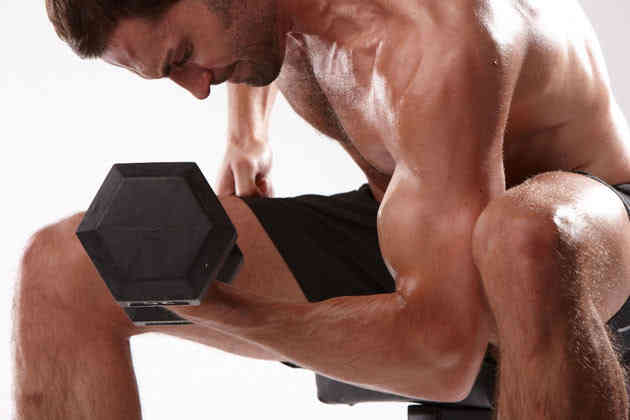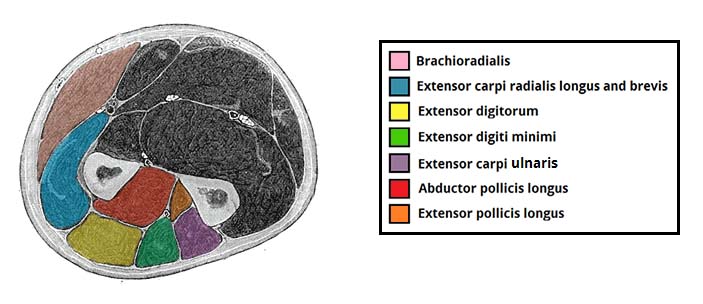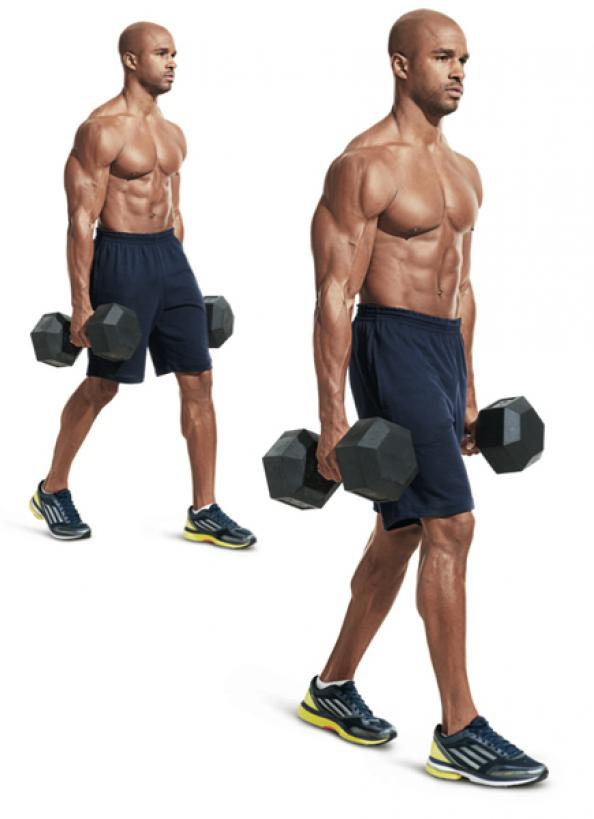
Weak Forearms = Limited Strength
Overcoming past limitations is what’s required to reach the highest levels of achievement, especially when it concerns your physique.
Many of us may have been working out for the past few years but have stalled in the major lifts that effectively build muscle (see The 3 Major Lifts that Build Muscle). Whenever pressing or pushing a weight that’s too heavy, your wrists and forearms may fatigue faster than your larger muscles (biceps/triceps).
Undertrained forearms can hold you back from making significant progress in your strength conditioning program, regardless whether you’re training to lose fat or build muscle.
A weak grip on the dumbbell or barbell could be another reason your strength isn’t progressing. A firm grip when lifting weights increases motor neuron response to your muscles, often referred to as mind-body connection in the bodybuilding community.
The muscles of the forearm are separated by the two actions they perform; extensors (posterior forearm) and flexors (anterior forearm).

The larger muscle group of the two are the flexor muscles (uncolored), which should be your target to break through old strength plateaus.
How to Grow Your Forearms With Direct Training
During a compound movement, your forearms help larger muscles with the mundane tasks we perform daily (lifting boxes, carrying bags, turning doorknobs).
The average adult male is capable of these movements, but weightlifting requires higher amounts of stress on the muscles to reach new echelons of strength.
To better train the forearms for better overall strength, isolation exercises are the best method to improve your performance. Weighted exercises that replicate these mundane tasks can be added to a training program when compound movements are no longer effective.
These are the 2 exercises I recommend for direct forearm training:
Farmer Walk

Farmer walks involve walking a short distance with a pair of dumbbells or any kind of heavy object with an upright back. This strengthens your wrist grip strength and greatly improves your posture by forcing you to protrude your chest outward to remove pressure on your lower back.
Deadlift Holds
Deadlifts are one of the best fully body movements that engage all the muscles in your body to move a large amount of weight from the ground. They also can be used as an isolation exercise with a brief hold at the end of each set. Deadlift holds are effective because they’re targeting a small muscle when you’re the most exhausted, greatly increasing the intensity of the exercise. Holds range anywhere from 5 to 10 seconds and can be effective with 2-3 sets.
When to Do Forearm Training
Forearm training should be focused on individuals that have surpassed beginner levels of strength and are struggling to make further progress. Weak forearms become noticeable when the upper arm (muscles surrounding the humerus) has become significantly larger than the muscles surrounding the lower arm (radius and ulna).
Training your forearms can impact the performance of your major lifts, so they should be added to the end of your workouts when you’re completely exhausted.
The Wrap Up
Neglecting forearm training in a workout program can affect your overall strength down the road, but it shouldn’t be a priority for the new weightlifter who hasn’t acquired basic levels of strength. Forearm training can be done with isolation movements that closely mimic the everyday tasks to improve muscle size and functional grip strength. Treat forearm training like your cardio, and add them to the end of your workouts.
What else do you want to know?
How to Get Super Defined Arms
Why is My Strength Plateauing?
3 Major Lifts for a Perfect Physique


Leave a Reply
You must be logged in to post a comment.